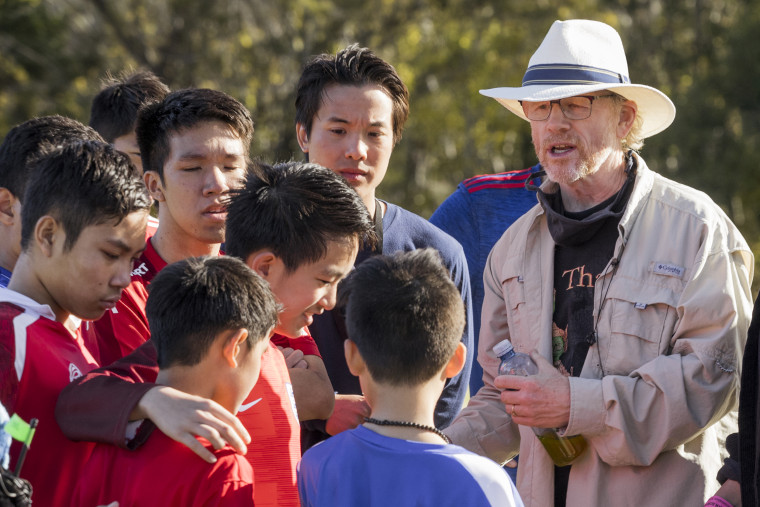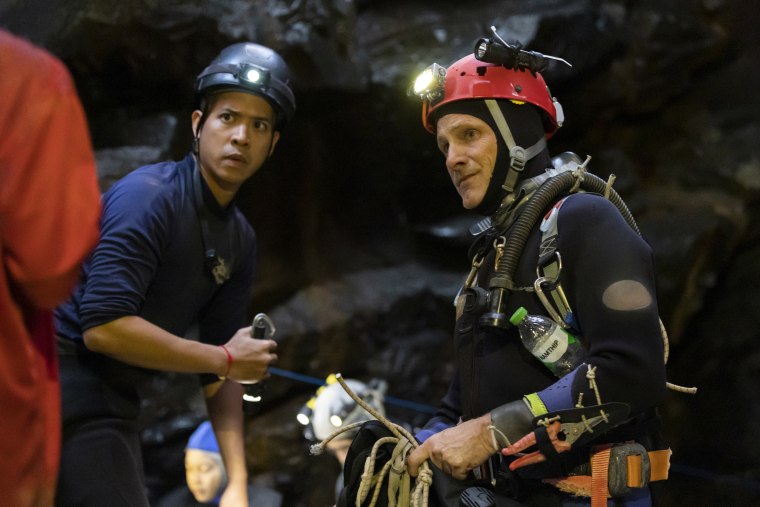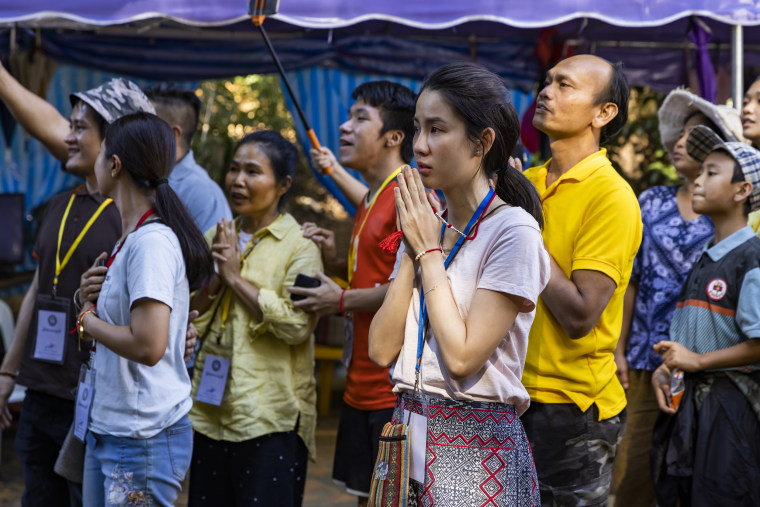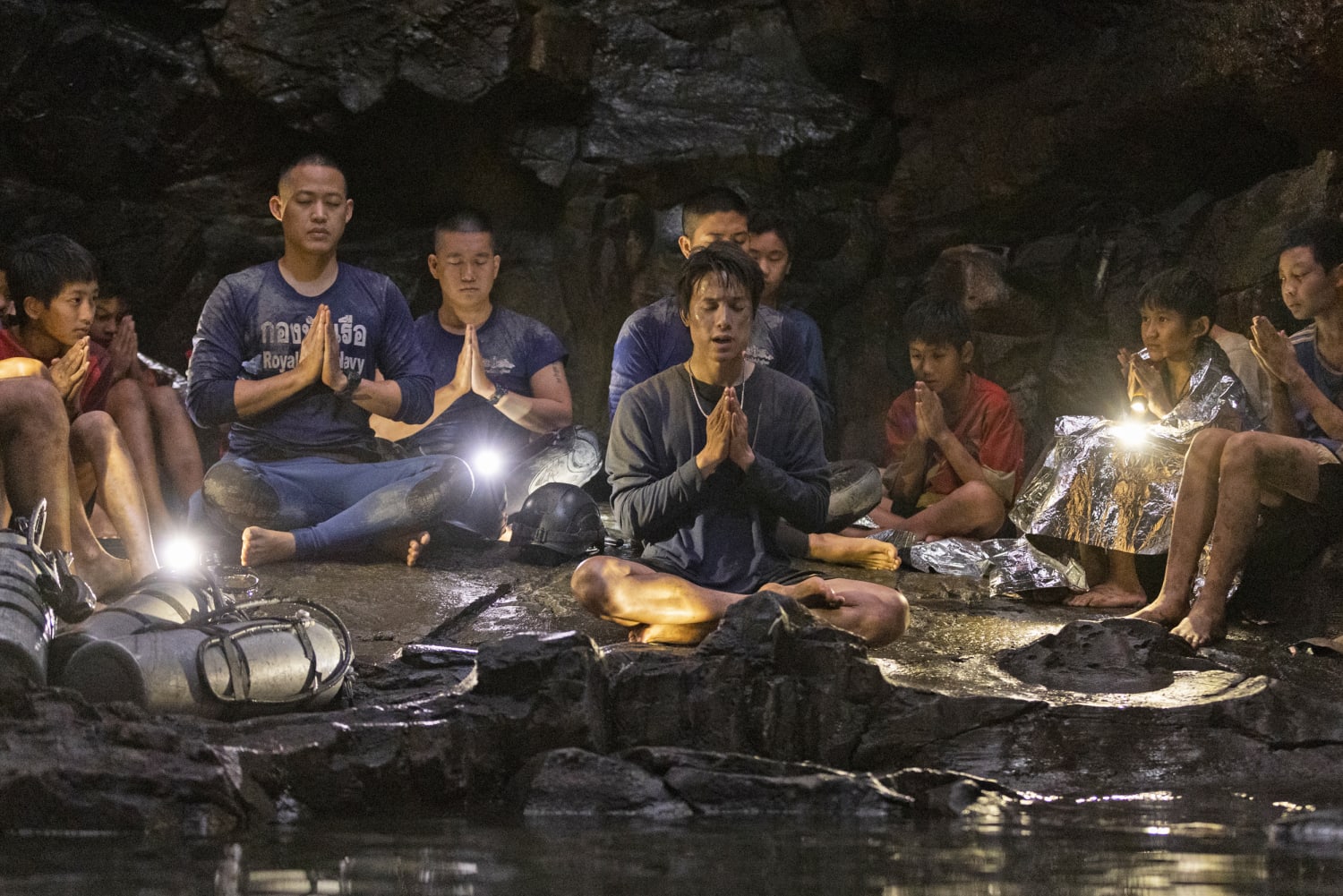In “Thirteen Lives,” a documentary-styled dramatization of the 2018 flooded cave-complex rescue in northern Thailand, telling the story from the perspective of the local Thai people was a priority.
To tell the story of the rescue of a youth soccer team and their coach, film director Ron Howard styled it as an ensemble film with a small cast not only of individual heroes, but also a wide array of characters who ultimately made it happen. It was the individual acts of heroism of the people involved, most of whom were Thai, that amounted to the miraculous rescue.
The film, released on Amazon Prime and in select theaters, tells the story of the villagers helping the rescue effort by diverting rainwater from the mountain above and the farmers’ flooding their paddy fields to receive the water, even if that meant losing their livelihoods — all the while the parents remained committed to keep faith.

“[Howard] was very clear in the beginning that he wanted to make a film that Thai people watching would consider Thai,” Thai co-producer Raymond Phathanavirangoon told NBC Asian America.
And the most intuitive way was to ensure that he had Thai people at work in front and behind the camera to inform the tone, feel and detail that a Thai audience would recognize and appreciate, he said.
“We never really had a conversation about it,” said Phathanavirangoon, who was first brought on as a consultant before joining as a co-producer. “It was just kind of assumed that this would be the way that we’d do it.”

While the story does follow the divers, played by Viggo Mortensen, Colin Farrell and Joel Edgerton, “Thirteen Lives” specifically calls attention to the sheer scale of collaboration involved in the rescue effort, especially among the locals.“I wanted to be as journalistic as I possibly could be,” Howard said in a behind-the-scenes video. “And one of the things I wanted to convey is that Thai people saved these boys.” Howard pointed out in another behind-the scenes clip alongside Phathanavirangoon: “It’s a story set in Thailand, but it’s also a Thai story.”
On June 23, 2018, a soccer coach and 12 boys from northern Thailand ranging in ages from 11 to 16 went exploring the Tham Luang cave complex before it was flooded by early monsoon rains, trapping them inside. For nine days, the team survived in the dark without food before two British volunteer cave divers, Rick Stanton and John Volanthen, found them.
The rescue, which dominated media coverage and enthralled the world, lasted 17 nights and involved 60,000 individuals from Thailand and other countries around the world, the majority of them volunteers. The team was ultimately rescued after being sedated and delivered 2.5 miles, unconscious and underwater, out of the cave complex in a relay style by a team of foreign divers and the Royal Thai Navy SEALs.
The production was committed to maintaining authenticity, Phathanavirangoon said, pointing to the specificity in casting as one example. While all but one of the young actors playing the soccer team had any prior acting experience, most are from northern Thailand, just like their real-life counterparts. Thai audiences would be able to distinguish their accents, he said.

And the casting for Buahom, a stateless mother to one of the boys, was also very intentional: as a Tai Lue, a well-known ethnic tribal group in northern Thailand that has roots in neighboring Myanmar but whose original homeland is in present-day China, the actress playing Buahom (Pattrakorn Tungsupakul) needed to appear more ethnically Chinese. “Most Thai people will get it immediately,” Phathanavirangoon said.
And the man who played Kruba Boonchum, a revered monk who came from Myanmar to lead prayer ceremonies at the cave and predicted that the boys were safe and would be rescued, was himself a monk for decades in Myanmar. Phathanavirangoon advocated for casting someone who knew the prayers and rituals because, “when he starts to pray, [the actors] have to actually feel that he’s a real monk.”
Even the film’s score was influenced by a folk song from the Chiang Rai province, where the cave is located, composer Benjamin Wallfisch told Variety. Thai musicologist and vocalist Natt Buntita then sings it in the end credits.
Teeradon “James” Supapunpinyo, who plays Coach Ek, also learned meditation and even studied at a monastery because the real coach had trained as a Buddhist monk and taught the boys to meditate while they were trapped in the cave. Supapunpinyo taught the young actors the same and maintained a meditation practice with them throughout production.
Phathanavirangoon also said Howard gave the Thai cast and crew the freedom to add their own touches to the script, including one scene when the Thai SEALs meet the boys for the first time in the cave, and Commander Kiet (Thira Chutikul) greets them smiling with, “The boys in the north are tough,” a line that was ad-libbed by Chutikul, Phathanavirangoon said. Western audiences will likely miss these conspicuous nods to cultural nuances, but Thai audiences surely won’t.
The film also made efforts to show reverence for the late Saman Gunan, the retired Thai SEAL who volunteered for the rescue effort and died in the cave. The film not only devoted scenes to building his character arc but also by casting Sukollawat “Weir” Kanaros, a well-known and respected Thai actor, for the part.
“We wanted to make sure that when we’re portraying this extremely important person to Thailand, we also have somebody that we all respect,” Phathanavirangoon said. From the responses he’s received from Thai audiences so far, many were particularly endeared to Gunan’s portrayal and pride in the story.
“As we painfully tried to convey in the film, for the divers, of course, there’s a huge amount of stress and strain on them,” Phathanavirangoon said. “But for the Thai people, it would have been a completely devastating and irreconcilable loss.”
As the SEALs captain tells one of the British volunteer rescue divers, “Those are our boys in there.”
Source: | This article originally belongs to Nbcnews.com










